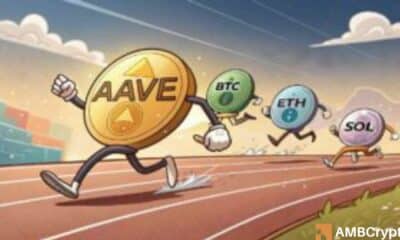Altcoin
Litecoin miners are seeing a 5x increase in this, thanks to Dogecoin!
Dogecoin, the ‘market frenzy’ coin has had its day in the sun thanks to Elon Musk. It saw a major surge in its volume, even jumped to an ATH and ranked 4 on the overall CMC cryptocurrency market cap. However, irrespective of its rise, it was always associated with an identity crisis: it is a meme coin, a bubble, not to be taken seriously… a joke coin trying to be taken seriously.
At the time of writing, the coin was trading
at the $0.30 price level.So considering these ‘ruff’ times, does it equate to a bubble?
Tesla CEO, self-appointed brand ambassador of DOGE, Elon Musk has been supporting the coin for a few months now. Here’s a small glimpse of his support and the effect his tweets have had on the coin. the chart below indicated four of Musk’s tweets about Doge. These tweets include:
1) “Dogecoin Our Network” (2) “Dogecoin is the people’s crypto” (3) “Doge on The Moon” (4) Elon’s GitHub call to action
Spencer Noon highlighted few key aspects about DOGE in his latest edition of the “Our Network” newsletter (Issue #73). This possibly could change, if not all, then some of your perceptions about DOGE.
Spencer Noon’s analysis stated:
“DOGE has historically made up 10% of all LTC merge mining revenue. Litecoin miners are seeing a 5x increase in daily revenue (80% from DOGE income). Opportunistic LTC miners have driven up Dogecoin’s hashrate by 48% YTD (30D) with the merge-mined coin now having a higher market cap than its base coin.”
Having said that, he was quick to acknowledge a key setback for DOGE when contrasted with the world’s largest coin, Bitcoin.
In terms of Node topology, only 62% of DOGE nodes were in sync within 5 blocks of the chain tip, partially driven by Dogecoin’s 1-minute block times. Additionally, the analysis stated:
“Lower numbers of fully synced nodes make it harder for new nodes to connect and sync to the network, highlighting certain deficiencies at the network layer.”
